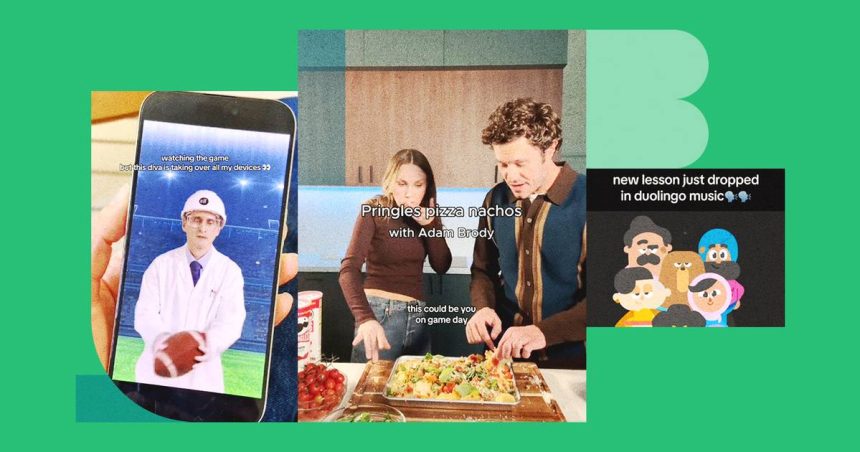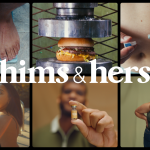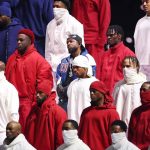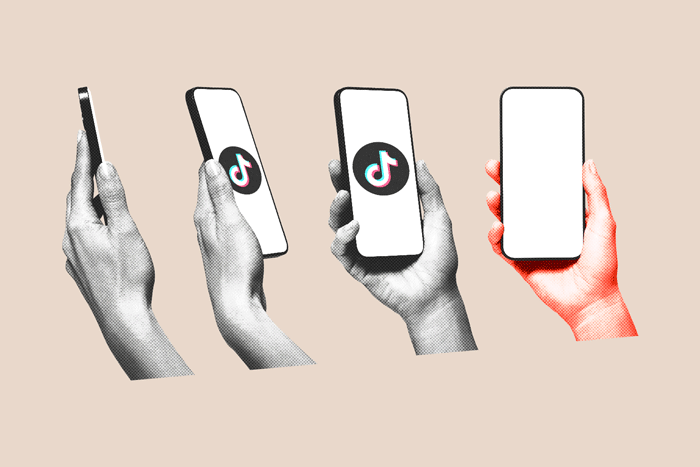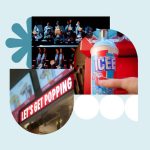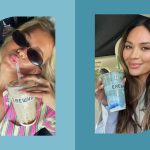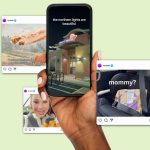Little screen continued to be just as important as big screen this year for brand Super Bowl activations.
While there didn’t appear to be a singular social moment that compared to Oreo’s “dunk in the dark” tweet, there were certain trends and themes that emerged in how brands activated online around the Super Bowl.
Straight to NOLA: It wasn’t just Eagles and Chiefs players on the ground in New Orleans. The NFL hosted more than 150 content creators to the Big Easy, and brands like Gatorade, Verizon, and Abercrombie & Fitch hosted creator-attended events there.
Streaming platform Dazn, which oversees NFL Game Pass International, sent creators to generate trivia and interview content to raise awareness of the game in Europe and the rest of the world, Joe Caporoso, president of Team Whistle, which runs Dazn’s social strategy, told us. The focus, he said, was on “volume and getting more faces down there in more short-form formats.”
Kelsey Chickering, principal analyst at Forrester, also pointed to the number of creator houses that popped up this year around the big game. “It’s interesting to see…this comeback of the live brand activation in-person event and using that as a vehicle to bring in creators, get them to make content, and have that branded content be made naturally in those situations,” she told us.
Switching screens: In past years, brands like Nerds and Sabra hummus have brought creators like Addison Rae and Charli D’Amelio to the big screen in their Super Bowl ads. This year, it seems to have been all about Alix: Creator Alix Earle was featured in Super Bowl ads for both Carl’s Jr. and Poppi, and she participated in Hellmann’s online campaign.
On the flip side, some brands deployed the celebrity partners they worked with for their Super Bowl ads online. Pringles paired actor Adam Brody with creator and chef Meredith Hayden, who has 3.5 million followers on TikTok and Instagram as @WishboneKitchen, to drive buzz before the game. The brand also worked with NBA star James Harden and paired him with creator and barber Victor Fontanez.
“We know that lo-fi content and creator content performs best with our Gen Z audience,” Diane Sayler, senior director of full-funnel marketing, salty snacking, at Kellanova, told us via email. She said that Pringles’s “strategy was to show up in surprising corners of the internet and leverage our celebs in unexpected ways, including creator-led content.”
The art of the stunt: Coors Light opted to drive initial social chatter not with a big-name creator or celebrity, but with a misspelling on billboard and newspaper ads. “We didn’t want to make it obvious this was the beginning of our big-game campaign,” Marcelo Pascoa, VP of marketing for Coors Light, told us via email. “Instead of obviously promoting the mistake, we boosted it with paid and encouraged fans and brands to comment on our organic apology post.”
Get marketing news you’ll actually want to read
Marketing Brew informs marketing pros of the latest on brand strategy, social media, and ad tech via our weekday newsletter, virtual events, marketing conferences, and digital guides.
Doritos also generated buzz by bringing back its Crash the Super Bowl contest, allowing fans to create and submit their own ad, and encouraging others to vote on their favorites.
As far as lead-ups go, Chickering told us she didn’t see one this year that wowed her quite as much as last year’s CeraVe campaign with Michael Cera, which teased the ad with organic-seeming creator content, but she added that time will tell what the lasting cultural impact of this year’s efforts will be.
One-track mind: Instead of running a TV ad, some brands, like Mercedes-Benz, went all in on social media for their Super Bowl strategy this year. Makeup brand e.l.f., which ran an ad in last year’s game, opted to host a virtual “e.l.f.time Show” watch party and run an ad in Animal Planet’s Puppy Bowl instead.
Last year, State Farm ran a 100% TikTok-based campaign, but this year it refrained from advertising around the game altogether. Given everything that’s gone on with the TikTok ban, Caporoso said he anticipates less reliance on a single social media platform in future Super Bowl campaigns. “[It’s] a good reminder of how any of these platforms could go away or change at any moment,” he said.
To post, or not to post? It was perhaps one of the most fragmented online lead-ups to the Super Bowl in recent memory as brand teams considered where to post given potential platform bans and controversies. When it was still unclear whether TikTok would even be around on game day, Mae Karwowski, founder and CEO of influencer marketing platform Obviously, told us that marketers were thinking through creator back-up plans and working to ensure any partners had significant followings beyond TikTok.
“While we kept the TikTok ban in mind when planning out our content, we didn’t let the potential of it going away limit or hinder our creative thinking,” Sayler said. “Instead, [Pringles] placed more of a focus on ensuring any content we made could easily live on other platforms, if it came to it.”
Do it live: Across platforms new and old, posting through it continued to be a major social strategy for brands during the Super Bowl. Duke’s Mayo Bowl called Hellmann’s out on X, Beyond Meat called everyone out on Threads, Pringles and Little Caesars addressed their similar Super Bowl ads on Instagram, and Duolingo posted a video of cartoon children singing Kendrick Lamar’s “Not Like Us” on TikTok.
Read the full article here


